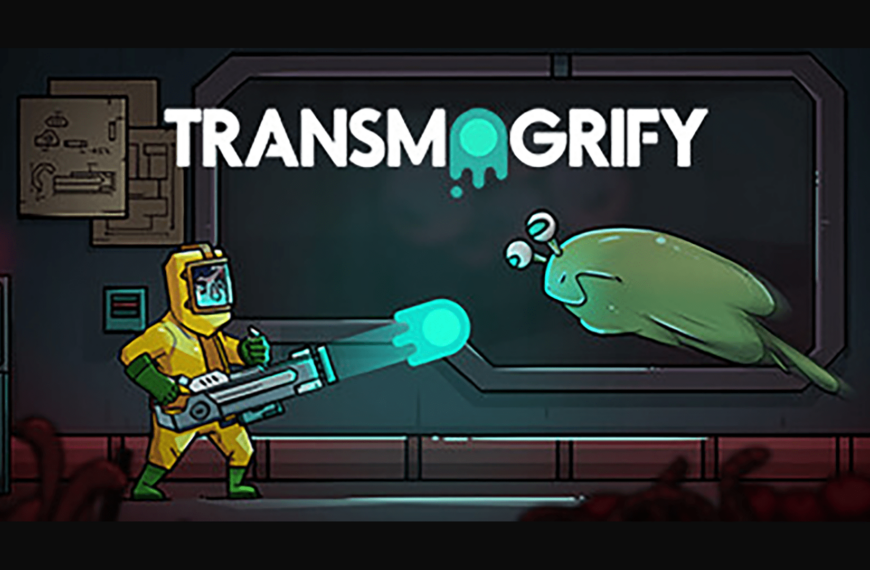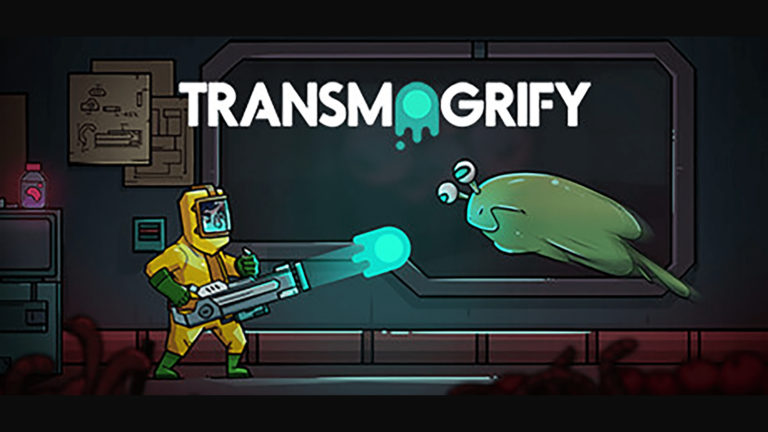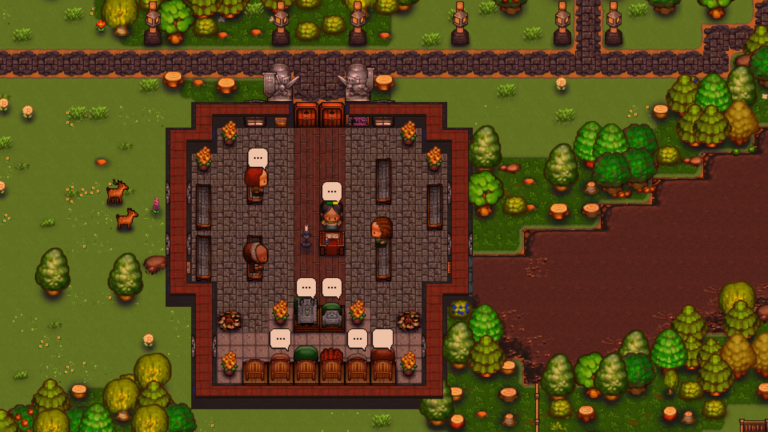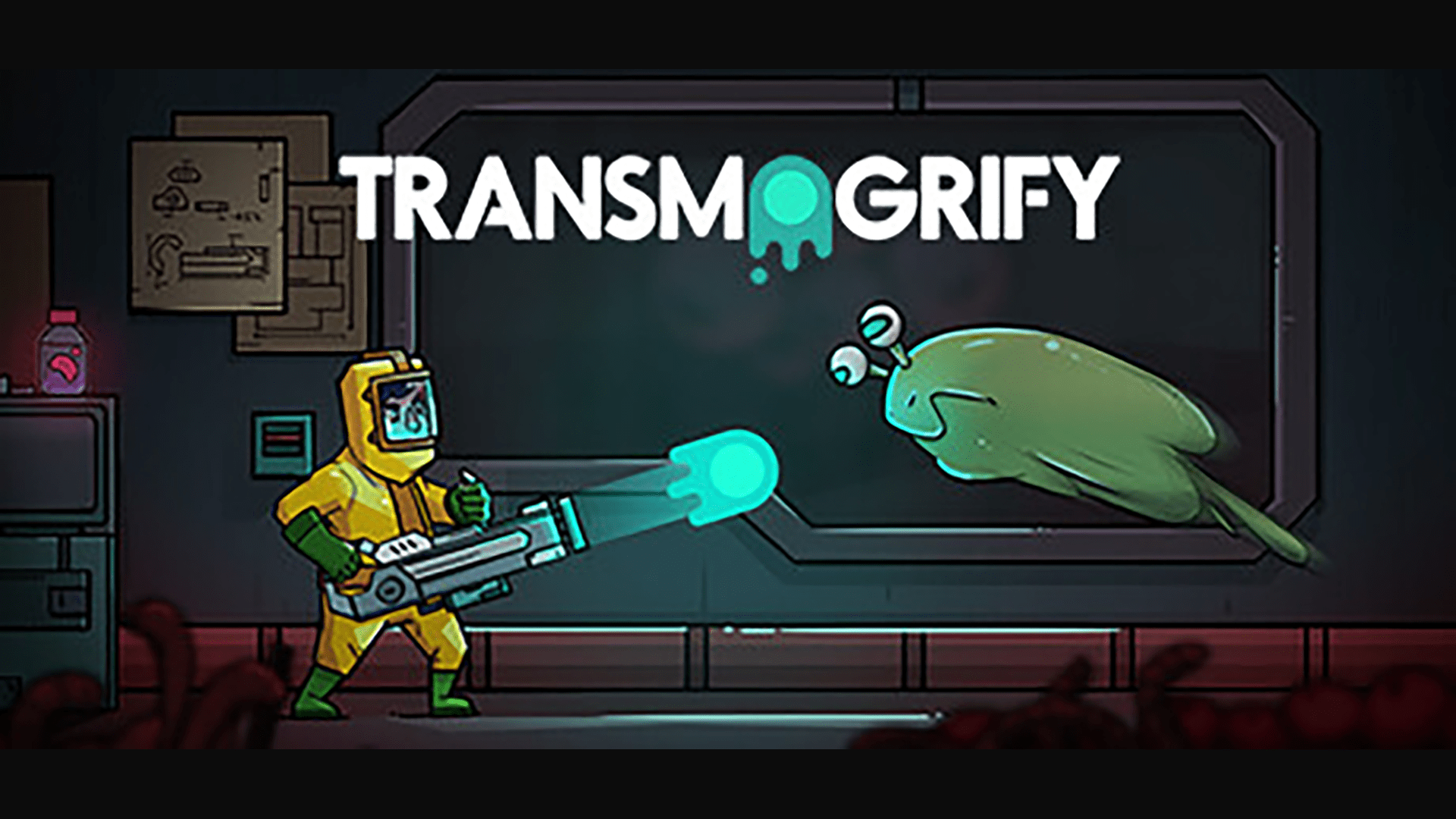From the people who brought you Limbo and Inside comes Somerville, a game without any dialogue in which you press forward in a single direction through environments that seem like they’re actively trying to kill you hounded by ague threats. There’s no dialogue, leaving much of the story up to interpretation.
In other words, it is very much like Limbo and Inside. And that’s a rather impressive pedigree. Both of those games are well received Indie classics. And Somerville, sadly, doesn’t quite live up to the legacy.
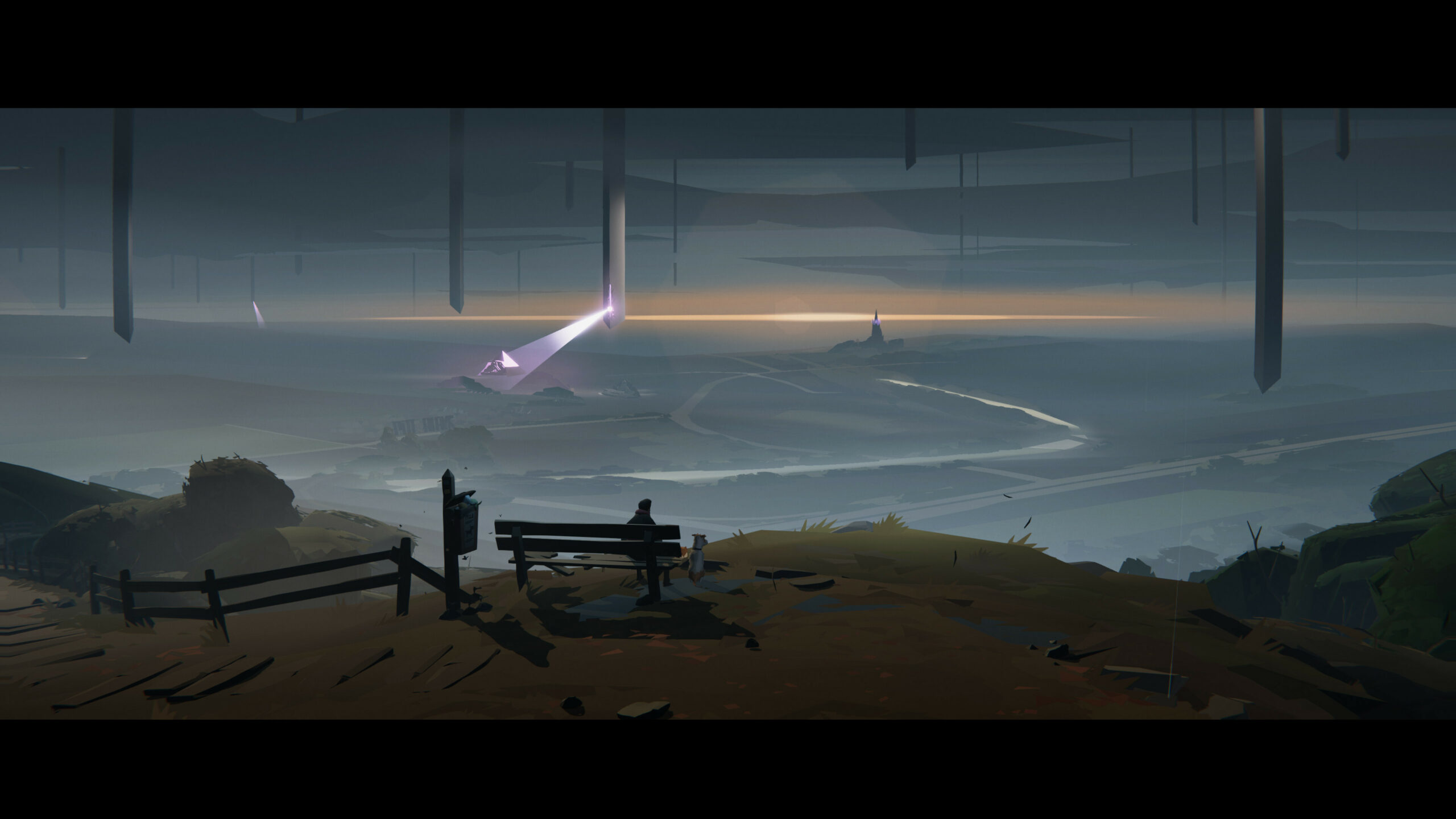
And I Would Walk 500 Miles
Somerville is an environmental puzzle game, which is unlikely to come as a surprise to anyone who has even heard of its predecessors.
You wander around a beautifully detailed environment moving objects around to get to other objects or to avoid obstacles. Some of those obstacles chase you and you have to run away from them. These games have never had particularly deep gameplay, instead focusing on the elegance of the simpler design.
It’s not a very long game. I clocked in at under four hours to beat the entire thing from start to finish. According to HowLongToBeat, that puts it at roughly the same length as its predecessors.
While Limbo and Inside were both 2D games (or confined to a 2D plane in Inside’s case), Somerville is entirely 3D, and unfortunately the transition was not a smooth one. Movement is slow, clunky, and slippery. You will get caught on the terrain at least once because you didn’t move around on obstacle the way you thought you did.
This isn’t helped by the camera perspective, which you have no control over. It usually stays in a single spot, rotating slowly to keep you in focus, but for certain set pieces it will also track you in a dolly shot. In other words, half the time you’re working blind. Depth perception from this camera angle is the kind of nightmare that makes the protagonists’ inability to walk around small obstructions make all kinds of sense.
There’s a point in this game where you have to walk through a single, small room without making noise by bumping into anything or stepping on broken glass, and when I realized that was what I had to do, I actually swore out loud.
The puzzles in this game are all extremely simple, with one exception but we’ll get to that later. You walk up to the thing the game wants you to, you press the interact button, and then you fiddle with the control stick until you’ve found the extremely specific direction that the game wants you to hold by interpreting the character animations.
The interact button can be fiddly and oftentimes the protagonist would spin to a different interactable object like he thought that was what I wanted him to use, and smaller interactions like pressing buttons would sometimes not register until I repositioned him as a different angle.
Also Read
Transmogrify PC Review: The Best Way To Defeat An Enemy
Transmogrify is a game with a strong central idea let down by a shoddy execution resulting in an experience that is…
Defy the Gods as a Witchy Moon Goddess in Hades 2
Supergiant announces Hades 2 for 2023 at the 2022 Game Awards. The sequel promises dark sorcery, witchery, and more frenetic roguelike…
You gain certain powers throughout the game that you channel through light fixtures that lets you interact with the junk left behind by the alien invaders. Oh, yeah, there’s an alien invasion. Don’t worry about it. Anyway. You start the game with the power to melt their junk into goop, and about halfway through the game, you get the power to un-goop junk into solid shapes.
As such, more or less every puzzle in the game comes down to finding a way to make goop out of whatever happens to being your path at the current moment. If you aren’t making goop out of something, you’re usually moving an obstacle out of your way, which usually takes only a single interaction. Calling most of these puzzles feels generous. There are some interesting variations on the goop-making, like how sometimes the goop will pool like a liquid so you can adjust a water level, but I was disappointed with most of the puzzles in the game.
You’re either moving a light around and pretending you’re playing Power Wash Simulator or you’re wheeling a cart around, either to block line of sight or to climb on it later. There are only a handful of puzzles that require you to put much actual thought into them.
And yet despite how easy the puzzles are there is a general lack of clarity of what the game expects from you. Generally speaking your goal is to physically move to the next locations and rubbing yourself against every obstacle until you figure out what you’re allowed to climb will get you pretty far, but sometimes the game expects behaviors or solutions without explaining further. The first puzzles are probably the worst example of this. I could go on for paragraphs about the bizarre decisions the game expects. My personal favorite is attempting to have your entire family drive away across an active battlefield instead of hiding in the basement.
There are also a handful of chase scenes where you have to flee from a pursuing alien that wants to shoot a six-foot pole through your abdomen and my doctor tells me that’s bad, so we should probably avoid that. These sections are all mercifully short, considering that, again, you are absolutely going to get stuck on the environment.
These were also the only sections where your character hustles, and let me tell you, his insistence on walking across what could still be an active battlefield in a leisurely meander can get grating fast.
Which is why the game’s final puzzle astounds me so. I don’t know what scares me more, that the developers thought of this puzzle or that there are people out there who solved it. To be clear, I not only had to look up the solution, I then had to look up why it was the solution. That’s the kind of puzzle it is. It requires you to pay attention to clues throughout the course of the entire game, which you may not even realize are supposed to be clues. Given that most of the final stage—minor spoilers, of course—consists of walking forward while holding down a single trigger, or occasionally solving laughably easy puzzles that consists of mostly holding down that same trigger, something so elaborate comes completely out of nowhere.
All of this is not to say that the game is bad, mind you. Somerville is fine. But it’s only fine. The simple gameplay and puzzles that barely qualify as such hold it back from anything more than that.
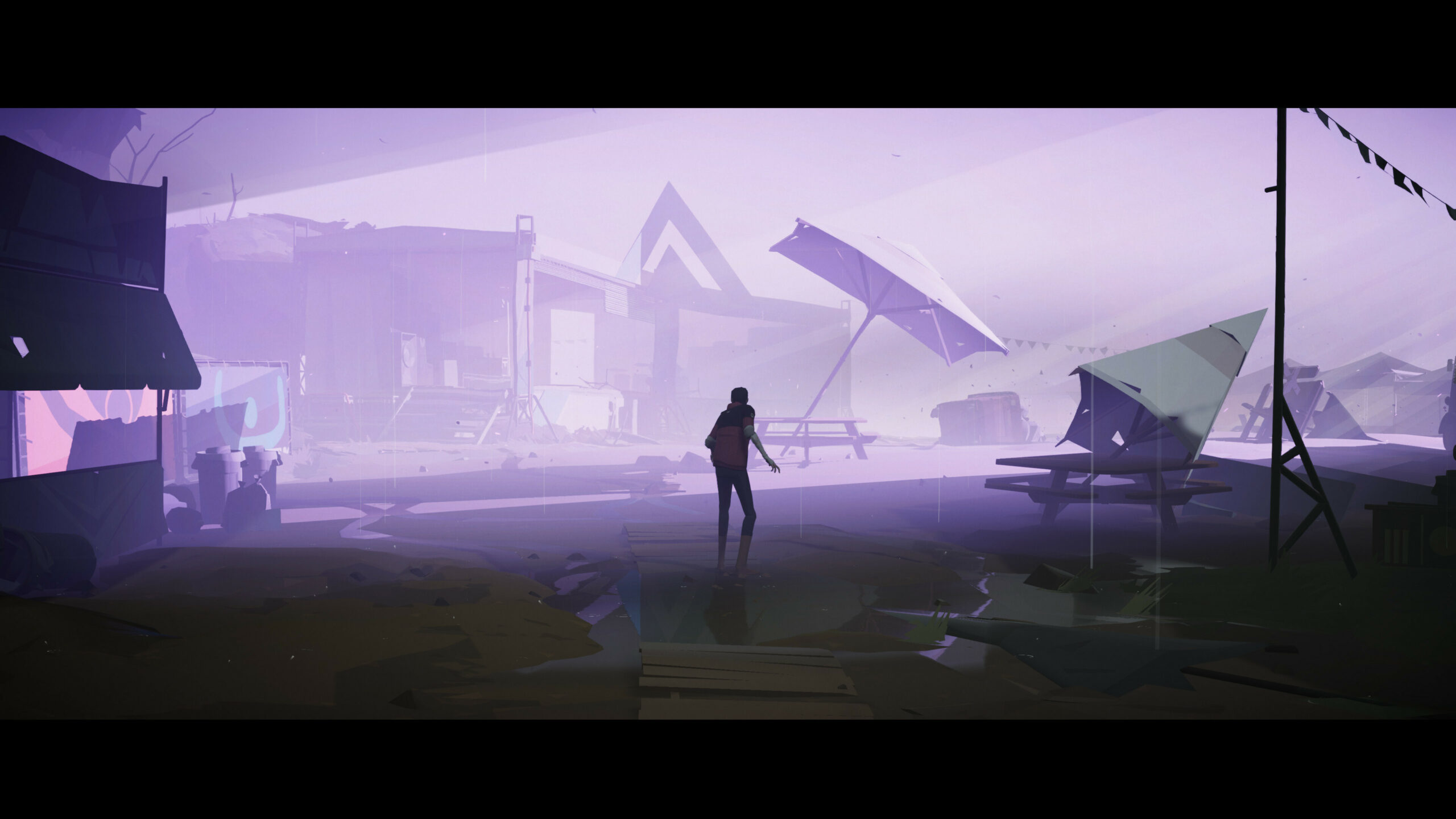
Blue, Red, Purple
Somerville is a very pretty game.
The environments are absolutely stunning, especially in the wider outdoor areas where you feel like you can see miles of devastated fields. The ominous obelisks floating above or embedded into the landscape only add to the sense of scale and dread.
The aliens truly feel alien, with their harsh geometric shapes clashing against the natural landscape and even man-made implements, like cars or tents. Small details like pouring water and lighting make the world feel rich and alive.
The effects are also quite nice. There’s nothing quite like the fist time you see a massive alien tractor beam hit the ground far too close for comfort.
The sound design is phenomenal, with the sound effects having a weight to them that adds a lot to the experience. And the music is gorgeous.
However, the richness of this world causes some issues with readability.
Limbo was a monochrome game, and Inside was heavily desaturated. This allows for easy contrast to highlight important features and items in the environment. Somerville lacks a similar unifying visual theme that allows for such easy contrast.
In Somerville, objects you can interact with are colored yellow. But this yellow is a diegetic color, like that being the color of a console or a towel draped over a handle. This yellow is also very easy to miss as it blends into the environment. Though this is admittedly a minor point, as you are almost never under a time pressure to interact with something.
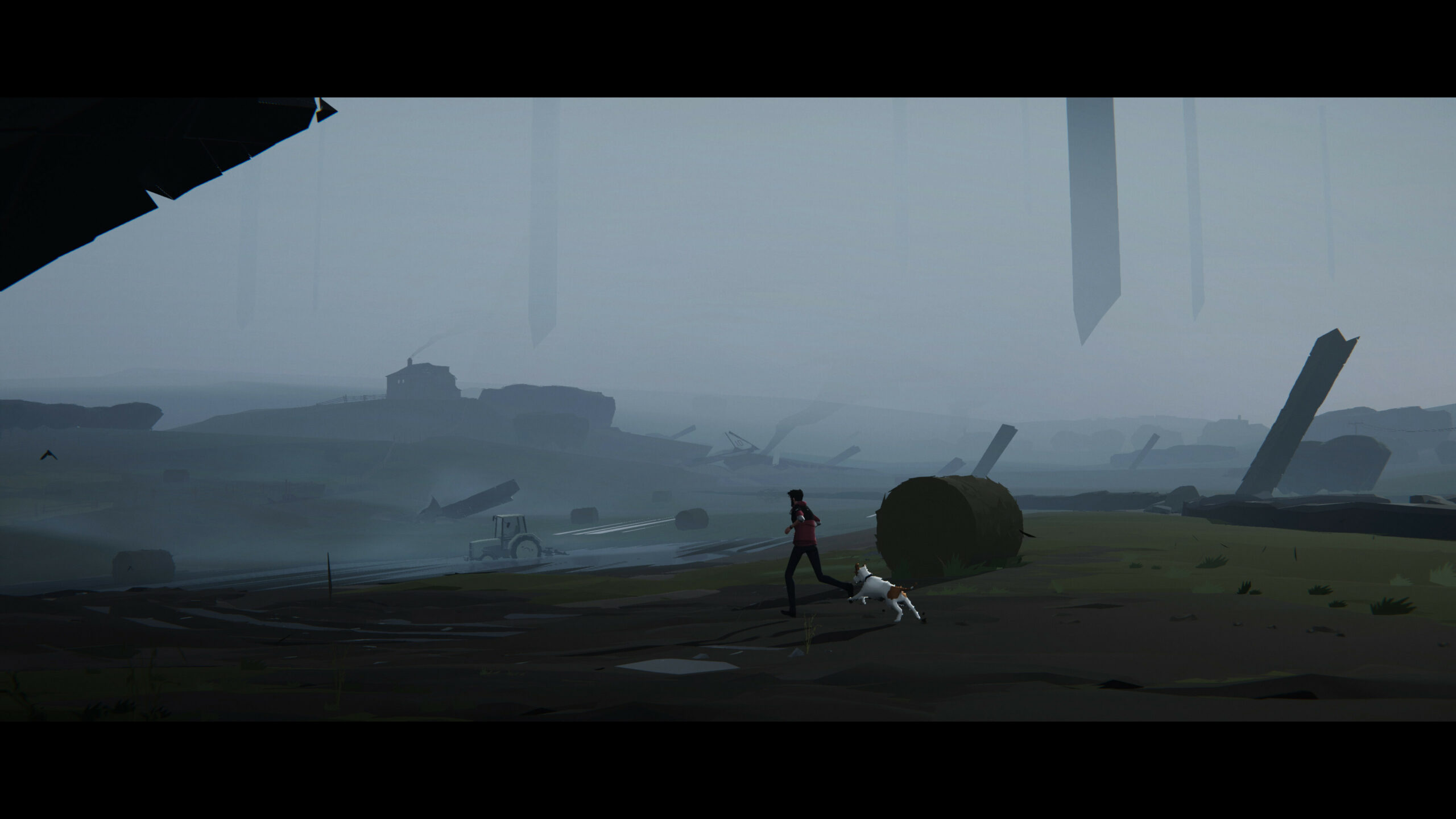
Xenofiction
Like its predecessors, Somerville is a story told without dialogue. There is little to no text and no spoken words. Everything is conveyed through character boy language and environmental storytelling.
Limbo and Inside were simple adventures that mostly told stories through background details. Their narratives were ambiguous and deliberately left many questions unanswered. This is, to be clear, a perfectly valid way to tell a story. Somerville on the other hand tells its story as a somewhat more conventional narrative. There’s still no dialogue, but you don’t begin the game in the middle of nowhere with no goal beyond ‘move right’ and slowly piece together more details.
Somerville is about an ordinary family trying to survive an alien invasion. After a series of poor decision making at the start of the game, the family hides in the basement for protection, only for a highly advance ship to crash, the pilot reaching out. When the father takes the pilot’s hand, he has a flash of the pilot’s memory and collapses.
When he awakens again, his wife and child are nowhere to be found. Your only companion is your faithful dog. (Don’t worry, nothing ever happens to the dog. They don’t even do any fake outs that something will happen to the dog. The closes the dog come to peril is occasionally being left behind for a while before meeting up with you again.)
Your job is to make your way across the devastated landscape looking for your family. The game never spells out that’s what you’re looking for, but what else would it be? That elegance in the narrative is quite fascinating to me, to manage such exposition through very little direct explanation.
The game continues like this, never feeling the need to spell out any of the events of the game and trusting the player to pay enough attention to how the characters are acting to follow along with their actions and choices. And yes, there is still quite a bit of ambiguity and mystery left by this style, but they aren’t questions that you need to answer to follow the story.
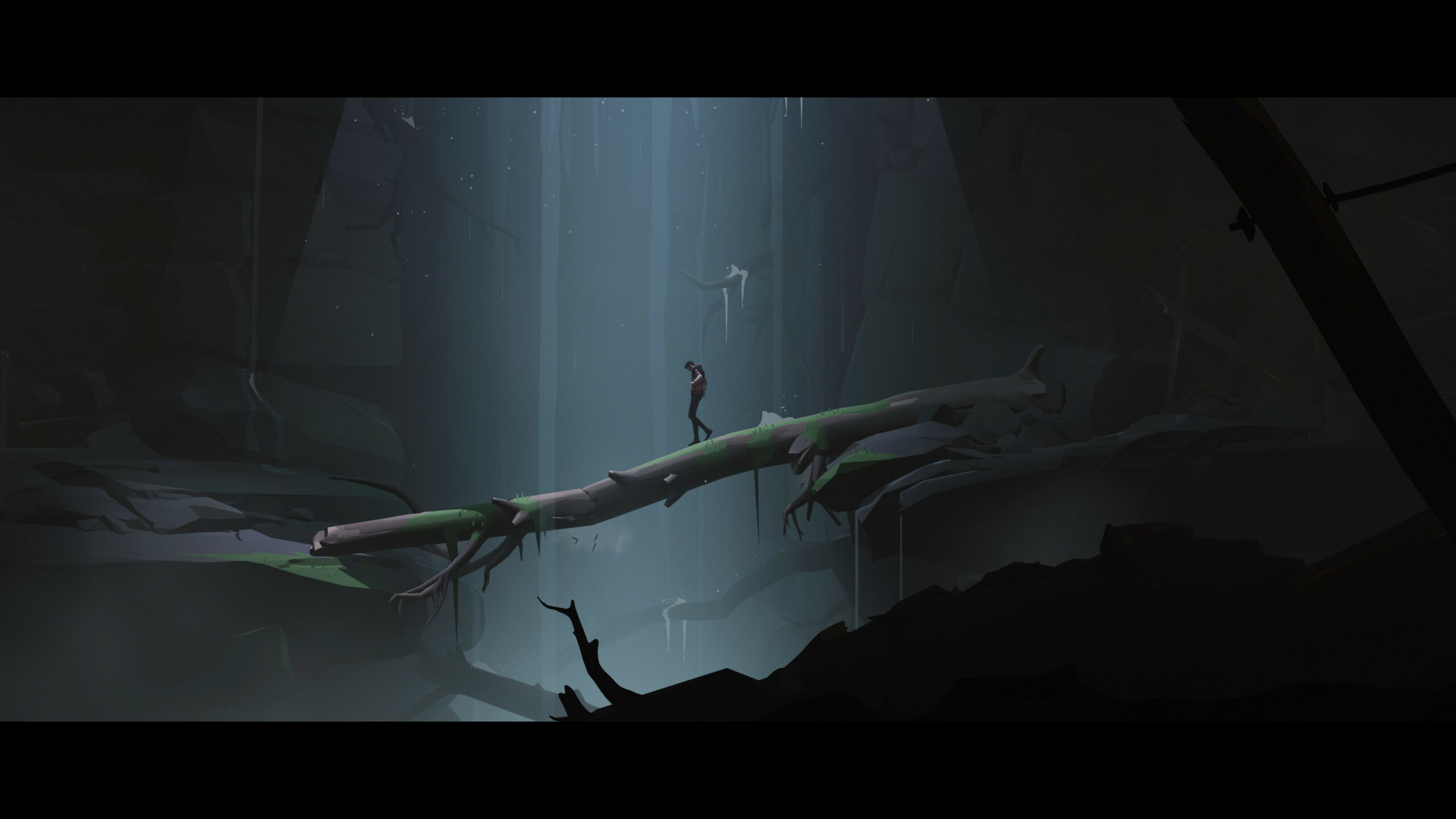
Conclusion
Somerville is fine. Functional, and with some interesting themes it seems to be exploring. But it lacks a lot of polish and the actual gameplay is in many places underdeveloped. There’s nothing wrong with Somerville, but if you’re looking for the next great, this isn’t it.


